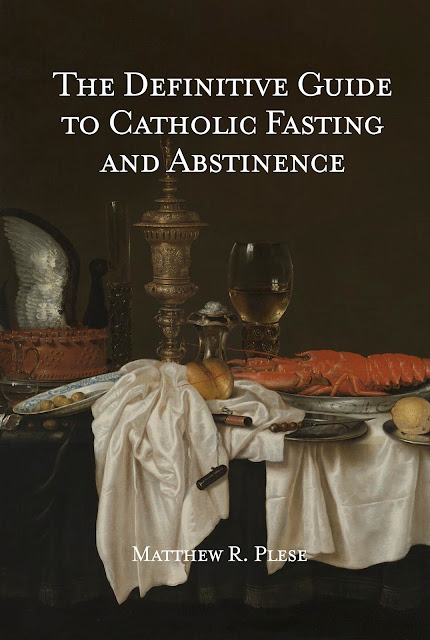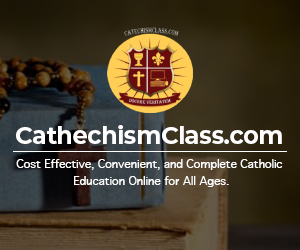Click for Larger Size
As a follow-up to my significant research on Traditional (Roman and Eastern) Catholic fasting and abstinence, I have put together a 2026 fasting and abstinence calendar for my devotional purposes. This is a follow-up to similar ones I created over the past several years.
Traditional Catholic Fasting Rules:
Fasting: Fasting refers to how much food we eat. It means taking only one meal during a calendar day. The meal should be an average-sized meal as overeating at the one meal is against the spirit of the fast. Fasting generally means that the meal is to be taken later in the day. Along with the one meal, up to two snacks (technically called either a collation or frustulum) are permitted. These are optional, not required. Added up together, they may not equal the size of the one meal. No other snacking throughout the day is permitted. Fasting does not affect liquids,
aside from the Eucharistic Fast which is a separate matter.
Abstinence: Abstinence in this context refers to not eating meat. Meat refers to the fleshmeat of mammals or fowl. Beef, poultry, lamb, etc are all forbidden on days of abstinence. Abstinence does not currently prohibit animal byproducts like dairy (e.g. cheese, butter, milk) or eggs, but in times past they were prohibited. Fish is permitted along with shellfish and other cold-blooded animals like alligators. In times past, days of fast were always days of abstinence as well; however, not all days of abstinence were days of mandatory fasting.
Partial Abstinence: Partial Abstinence refers to eating meat only at the principal meal of the day. Days of partial abstinence do not permit meat to be eaten as part of the collation or the frustulum. Partial abstinence
started only in 1741 under Pope Benedict XIV as a concession and as part of a gradual weakening of discipline. Beforehand, days of abstinence were days of complete abstinence.
Fasting, therefore, refers to the quantity of food and the frequency of eating. Abstinence refers to what may or may not be eaten.
Calendar Notes:
1. While Partial abstinence is allowed in the rubrics in place as of 1962, it is a a modern invention and is not part of this calendar. Abstinence is always full, never partial.
2. All Days of Lent, aside from Sundays, are days of fasting and abstinence. Sundays are days only of abstinence.
3. For Lent only, abstinence refers to all animal products (e.g., dairy, butter, eggs) in addition to meat. This includes Sundays.
4. January 22nd is in the USA only an obligatory day of penance for offenses against the dignity of human life.
5. This calendar keeps the 1954 Roman Catholic Calendar and the pre-1917 practice of anticipating Vigils on Saturday that fall on Sunday in a given year.
6. Major Fasts: Great Lent (February 18 - April 4), Apostles Fast (June 1 - June 27), Dormition Fast (Aug 1 - Aug 14), St. Martin's Lent (Nov 12 - Dec 24).
7. Dominican Specific Fasting Days: April 29, August 3, and October 6 are not on the calendar but will be observed by Dominican Tertiaries per the 1923 Rule (the last one before Vatican II). Same with all Fridays of the year, which Dominicans are asked to keep as days of fasting.
8. Days of fasting generally include all of the Major Fasts as noted above, in addition to the following days when they fall outside those periods: Ember Days, Vigils of the Apostles, and Vigils for Major Feasts. Rogation Days were often days of abstinence but not fast.
9. Before the 1830s, all Saturdays were days of abstinence except during Christmastide (in some places) and on major holidays.
10. Voluntary Saturday abstinence is omitted on current or former Holy Days of Obligation. Saturday Abstinence used to be obligatory year-round with some exceptions for days "as often as no major solemnity (e.g., Christmas) occurs on Saturday, or no infirmity serves to cancel the obligation.” One exception granted in some places was for all Saturdays of the Christmas Season to be exempted.
11. Year Round Wednesdays as days of abstinence are recommended based on the Early Church's practice of Wednesday penance (and based on the wishes of Our Lady of Mount Carmel). Abstinence year-round on Wednesdays would be commendable on all Wednesdays of the year outside of Pascaltide except for those when either a Holy Day of Obligation, Former Holy Day of Obligation, or First Class Feast falls.
12. While part of the Apostles Fast, both the Vigil of Corpus Christi and the Vigil of the Nativity of St. John the Baptist are recommended days of fasting and abstinence.
13. Exceptions for the Apostles Fast reflect both Corpus Christi and the Nativity of St. John the Baptist.
14. December 25th falling on a Friday was exempt from mandatory abstinence starting in the Middle Ages but beforehand it remained a day of mandatory abstinence.
15. Above all, this calendar goes far beyond the mere "minimums," which are virtually non-existent, and attempts to present concrete ways for Catholics to actually fast in the manner our forefathers did.
Want to learn more about the history of fasting and abstinence? Check out the Definitive Guide to Catholic Fasting and Abstinence.
Digital Version:
To order a digital .ics file of the above calendar that can be easily imported into your calendar application (e.g., Outlook, Google, Apple, etc.), order below.
The file is only $5.95. Please order it by clicking here.
After you complete the order, you will have a ZIP file. You MUST unzip that file to extract the ICS file. That ICS file can be added to the calendar application of your choice. Check out details for how easy it is to add an ICS file (after you unzip it) online.
Note that the file is a free benefit to all my Patreon members. So, if you become a patron, you will get that and many other benefits.











